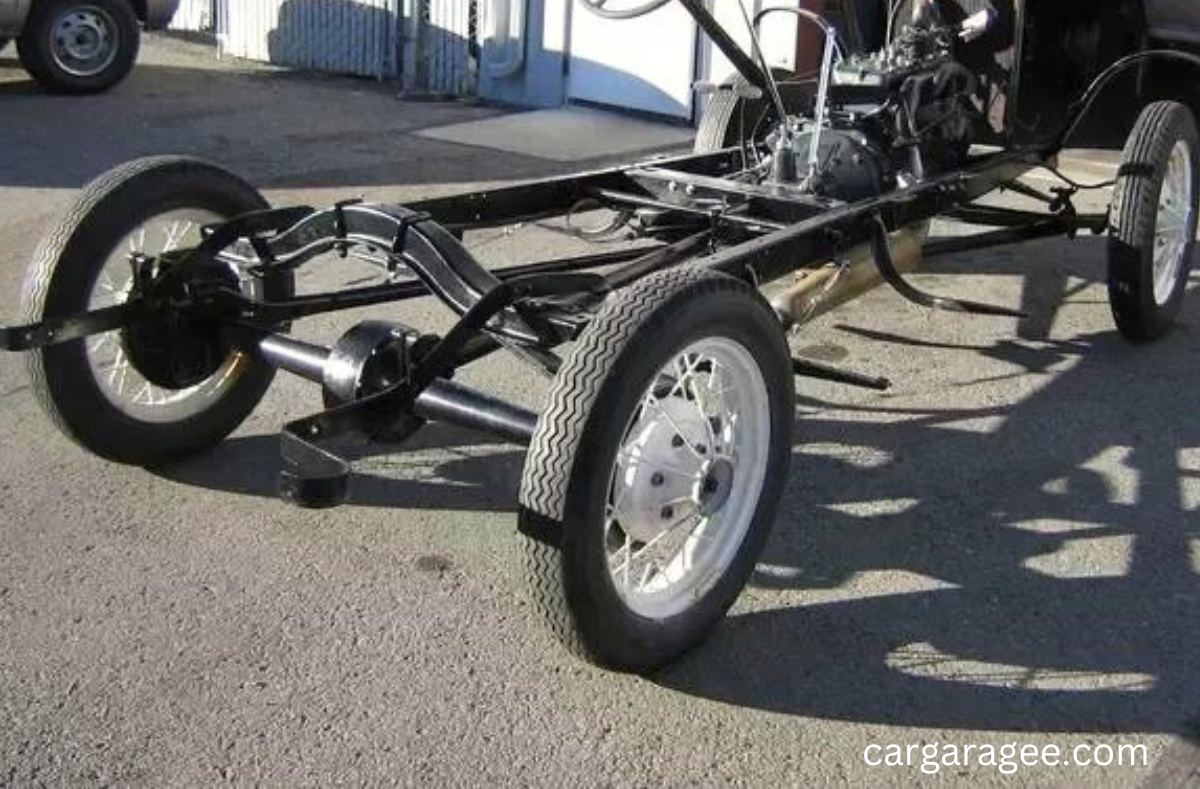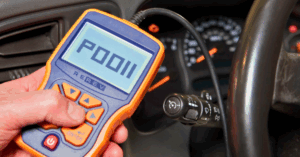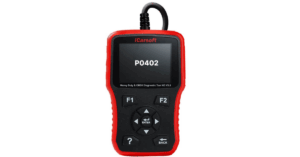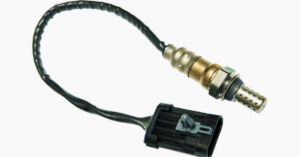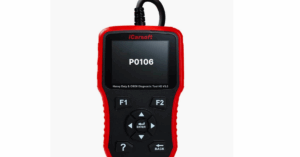When it comes to understanding how a vehicle operates, the axle plays a fundamental role in ensuring smooth movement. In the automotive industry, an axle is not just a shaft that holds the wheels in place—it’s a critical component that directly impacts performance. The number of axles in a car can vary depending on its design and purpose. Most standard cars have two axles, each located at the end of the vehicle and connected to the wheels on either side.
These axles support the rotating motion, ensuring a smoother driving process. Whether in a front-wheel or rear-wheel drive, the axles must handle torque and weight distribution efficiently. Built from steel, these rods provide strength to withstand continuous rotating and revolving forces. Through precise math, manufacturers calculate the right axle setup to ensure better stability and control. Understanding this essential component helps drivers appreciate the engineering behind their car’s ability to run effectively. If you’ve ever been curious, now you have a clear answer!
What Is An Axle – The Basics
Imagine your favorite toy car. How does it zoom across the room when you give it a push? The secret lies in a specific part called the “axle.” Think of it as the toy car’s backbone. Instead of bones, it has a strong metal rod that connects the wheels, helping them spin smoothly and take your vehicle on exciting adventures.
These components have a super important job in real cars, trucks, and even bicycles. The sturdy bars keep the wheels attached to the vehicle, allowing them to roll together like a synchronized dance. But they’re not just about holding things together; they’re the heroes that take the engine’s power and use it to spin the wheels, moving you forward on your journey.
Different types are tasked with various jobs: some are in charge of steering, while others propel the vehicle forward or carry heavy loads. Everyone works hard to ensure your ride is smooth, safe, and fun.
How Many Axles Does a Car Have?
When we discuss the number of axles a vehicle has, we ask, “What helps my vehicle’s wheels spin so I can go places?” Picture your car as a giant toy vehicle. Underneath are these unique bars connecting the wheels on one side to the other. These components are vital because they help your vehicle move smoothly.
Most vehicles are equipped with two. Think of it this way: one for the front wheels and another for the rear. This setup is perfect for getting you, your family, and your snacks to your destination.
However, not all vehicles are the same. Larger ones, like buses carrying many passengers or long trucks transporting goods, may require more. Additional axles mean more wheels to help carry heavier loads without stressing the vehicle. These extra components enable the car to navigate corners without getting stuck or occupying too much road space.
So, if you’re curious about the number of axles on your car or a large truck, look from the side. Count the pairs of wheels (like two friends standing beside each other). Most cars and small trucks will show two pairs, equal to two axles. But if you see more, you’re looking at a vehicle designed for more significant challenges or adventures.
Factors That Decide the Type of Axle in a Car
Think of your car as a superstar athlete. Just as athletes need the right shoes to perform their best, your vehicle needs the correct axles to shine on the road. But what determines the ideal ‘shoes’ for your car? It’s all about finding the right fit for your car’s style and the trips you take, whether peaceful drives in the city or exciting off-road adventures.
Every vehicle has its technical requirements and challenges, much like every sport demands a specific type of footwear. The power your vehicle’s engine produces and how it’s transferred to the road are critical in choosing its axles. Some stick with the standard options straight off the assembly line, while others opt for a custom-fit solution as unique as a tailored suit designed to enhance control, speed, and agility.
Custom solutions are the secret to fine-tuning performance. By tailoring axles to a vehicle’s specific needs, drivers can adjust how quickly and smoothly it responds to commands. Whether sprinting ahead or navigating tight turns, custom configurations ensure the car moves precisely as intended, offering an unmatched driving experience.
Let’s delve deeper into the axle universe, uncovering how they impact your drive and learning how the right choice can turn your vehicle into the ultimate driving machine, ready for any adventure.
READ MORE:
6 Common Problems After Engine Replacement
How Much Does Sway Bar Replacement Cost? A Comprehensive Look
Bad Torque Converter Vs Bad Transmission: A Brief Guide
WHAT TO DO WHEN YOUR Check Engine Light Flashing?
Types of Axles: A Closer Look
-
Front Axle: Your Car’s Steering Guide
- What It Does: The front axle is like the captain of a ship, steering the vehicle and tackling bumps on the road to give you a smoother ride.
- Made Strong for a Reason: Because it faces a lot of stress from steering and absorbing shocks, it’s built tough, usually from materials like carbon or nickel steel.
Types Of Front Axle:
Live Front: These are the power channels for the front wheels, directly delivering the engine’s enthusiasm for front or all-wheel-drive cars. They’re like the front-line soldiers, taking orders from the engine and ensuring the wheels enact those commands.
Dead Front: Unlike their live counterparts, dead front axles don’t transmit power; they’re more about providing support. They’re strong and silent, ensuring the front wheels stay aligned and handle the road without spinning.
-
Rear Axle: The Power Provider
- The Powerhouse: This axle uses the engine’s power to push your car forward or backward. It’s split into two parts but works as one to move your vehicle.
- Live Action: Most rear axles are “live,” meaning they rotate with the wheels, making your drive smoother and more controlled.
Types Of Rear Axles:
Semi-Floating: The jack-of-all-trades, supporting the vehicle’s weight and transmitting driving forces. It’s perfect for lighter vehicles, providing a balance of support and power without overcomplicating things.
Full-Floating: The heavy-duty option for those who mean serious business. These car axle don’t stay intact, supporting the vehicle’s weight through bearings on either end and leaving the axle shaft free to focus solely on transmitting power. Ideal for trucks and cars that carry heavy loads.
Three-Quarter Floating: Striking a balance between semi and full-floating axles, these are the versatile middle ground. They help keep the wheels aligned and absorb side forces, making them a reliable choice for various vehicles.
-
Stub Axles: The Wheel’s Best Friend
- Wheel Support: Stub axles hold onto your car’s front wheels, letting them turn smoothly as you steer.
- Connection is Key: They’re connected to the central part of the front axle by something called kingpins, which allows for that smooth turning motion.
Types Of Stub Axle:
Elliot: Using a simple kingpin, a yoke, and a cotter to attach to the front axle, the Elliot design is all about straightforward effectiveness.
Reverse Elliot: This flips the Elliot design, changing how the car axle connects to the wheel for specific engineering needs.
Lamoine: With an L-shaped spindle instead of a yoke, the Lamoine offers a different approach to wheel connection, focusing on durability and ease of maintenance.
Reverse Lamoine: As the name suggests, this is the Lamoine in reverse, adapting the spindle orientation for specific vehicle designs.
How To Know That Your Car Axle Is In Poor Condition:
-
The Mystery of the Clunking Noise
Have you ever heard a strange “clunk” sound when you try to move your car? It’s like your car is trying to talk to you! This sound can happen when you switch from park to drive. It’s your car’s way of saying, “Hey, something’s not right with my arms!”
-
The Wiggly Jiggly Feeling
Imagine riding a bike on a super bumpy road. If your car starts feeling like that, even on smooth roads, it might tell you its axle is wobbly. This jiggly feeling can be a clue that the car axle isn’t holding things together as tightly as it should.
-
The Invisible Wall
Here’s a weird one: your car is on, and you can hear it’s ready to go, but when you try to move, it’s like hitting an invisible wall. It won’t go forward or back! So your car axle, might be in trouble, unable to do its job.
What to Do?
Finding these signs is like being a detective. If you notice any, talking to a car doctor or a mechanic is super important. They’re like the superheroes’ helpers, ensuring the axle is in top-notch condition to keep you safe and your car running smoothly.
Remember, your car takes you on incredible adventures, so keeping it happy means more fun rides and fewer worries. Always listen to what your vehicle is trying to tell you – it’s the secret to being a great car lover!
Understanding Axle Ratios
The axle ratio is a key factor in a vehicle’s performance, influencing speed, torque, and fuel economy. Also called the final-drive ratio, it defines the power distribution through the gears and differential, directly impacting acceleration and efficiency. This ratio is expressed as x:1, indicating how many rotations of the input shaft are needed for one full revolution of the output shaft.
The half-shafts connected to the wheels transfer this power effectively. A higher numerically rated axle ratio means greater torque multiplication, improving acceleration with shorter gearing. In contrast, a lower ratio, known as taller gearing, sacrifices power for better efficiency on the pavement. Balancing peak performance with economy is essential, making the right axle ratio choice crucial for different driving needs.
FAQS
Does a Car Have 2 or 4 Axles?
The number of axles in a car depends on its configuration. Most passenger vehicles, including sedans, hatchbacks, and SUVs, follow a standard design with two axles. The front axle is primarily used for steering and may also deliver power in front-wheel-drive models.
How Many Axles Are on a 4-Wheel Drive Car?
A 4WD vehicle has two axles, but unlike standard cars, both axles provide torque to all four ends of the wheels. This design improves traction and stability, making four-wheel drive ideal for off-road or challenging terrains.
What Is a 4-Axle Car?
A four-axle vehicle is typically found in heavy, rigid trucks or semi-trailers. These trucks often have two front axles that steer and two driven rear axles. In tractor-trailer combinations, a four-axle setup may include one front axle and three rear axles to spread the load, ensuring better weight distribution and stability on the road.
What Are 3-Axle Cars?
A tri-axle truck is a type of commercial vehicle designed for transporting heavy loads over long distances. These trucks have three axles, typically with one in the front and two in the rear. Many companies use these large-capacity vehicles in industries like construction, shipping, and logistics, as they offer better weight distribution and stability for fleets operating in demanding conditions.
How Many Axles Are on a Standard Car?
A typical car has two axles, one in the front and one in the rear. In front-wheel-drive vehicles, the front axle delivers power, while in rear-wheel-drive models, the rear axle is responsible for propulsion. This simple yet effective design ensures a balanced and efficient driving experience.
What Is a 4×6 Car?
A 4×6 vehicle is a special type of 4-wheel-drive truck with 6 wheels, commonly seen in semi-tractors used to tow trailers. These heavy-duty vehicles provide additional traction and weight support, making them ideal for hauling oversized loads in industrial and commercial transport.

Mian Hashir is a passionate automotive enthusiast and the lead author at Car Garagee, a website dedicated to providing in-depth car reviews, maintenance tips, and the latest news in the automotive world. With years of experience in the industry, Hashir combines his technical knowledge with a love for cars to deliver insightful and engaging content. Whether you’re a car owner or a curious reader, Mian Hashir’s articles help readers make informed decisions, from choosing the right vehicle to understanding how to keep it in top condition.

